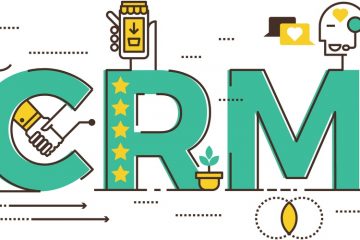Facebook has become one of today’s most affordable and precise advertising channels. With more than 2.3 billion active monthly users and a sophisticated algorithm that understands behavior and intent, Facebook offers digital marketers one of their best chances of getting their ads in front of the right eyeballs.
The abundance of data and targeting options enables audience, ad and landing pages to be tested. But, be aware of your mistakes — if you waste too much budget trying to find the right customers without a clear strategy and understanding of your target person, they can hurt your business.
Ads on Facebook can take up a substantial marketing budget. That might be all right if you get good results, but without methodical approaches, too many marketers are advertising on Facebook. They then experience the same pitfalls related to Facebook. Of course, a wrong move in your Facebook ad campaigns does not mean “Game Over.” It may cost you more advertising budget.
Targeting too big of an audience
One of the most common Facebook ad errors that will spend your budget quickly is that your target audience is just too large. You run the risk of burning your budget quickly with a large audience while hoping that the people with whom your content resonates will see your ads. Don’t use guesswork to base your advertising campaigns. Instead, take advantage of Facebook’s multiple targeting options to restrict your audience and tailor your ad content to suit your needs.
How? Sometimes too many possibilities and opportunities can hurt more than help. The key is to have a 360-degree view of your audience in order to better understand which targeting options can help you meet your business goals.
Not excluding those who have already seen your Facebook ads or taken action
Nothing is worse than wasting your Facebook advertising budget on people who are already familiar with your product or have seen your ad over and over again. Save your money by excluding custom audiences on Facebook; these can be compiled based on your website visits, actions taken with your brand, or followers on Facebook.
How?
- Exclude individuals who have visited specific landing pages. Make sure to create and implement a Facebook Pixel on your website to create a custom audience on Facebook that groups the people who have already visited your website.
- Exclude those who like your Facebook page already. Exclude your existing Facebook followers if you are trying to extend your brand reach and attract new audiences to your site. Your followers are advocates for your brand, so don’t flood them with the messages they’ve seen before.
Not learning from your organic posts
If your paid marketing campaigns are isolated from the rest of your marketing programs, you’re missing valuable data and insights from all the touch points of your customers— and that’s a major Facebook ad error. Use the organic posts data to understand the content of your audience and transfer those lessons to your paid efforts.
Forgetting your Lookalike Audience targeting
Lookalike targeting on Facebook is an easy way to find new and highly relevant customers without having to invest in research or multiple test rounds that could spoil your budget. Lookalike Audiences are people who are likely to be interested in your business or product because their interests or characteristics are similar to those of your existing customers.
It’s easy to avoid the Facebook marketing mistake of missing out on this powerful targeting tool.
How?
- Use only your best custom audience (social followers, customer database, or faithful customer and brand advocates list).
- Choose a smaller size of the audience. You can select an audience size from 1 percent to 10 percent of the total population in the country you choose when creating your Lookalike Audience, with 1 percent being the ones that match your seed audience most closely. The lower the percentage, the less and the more the audience was targeted.
- Layer on other targeting options to narrow your reach and better match your ideal customers, such as interest and behavioral targeting.
Not documenting your results
Whether it’s winning or failing, make sure your results are documented so you can keep improving and not lose sight of what you’ve tested in the past. Make sure the right metrics are tracked and learnings are summarized. (Tip: our Social ROI Handbook will help you set the right metrics and set goals so your team can measure the real impact of your social media marketing). Make it a habit of making your team’s data easily accessible.
How?
- Create a document that contains your findings and lessons.
- Share your team’s learning and key insights with the organization as a whole.
- Revisit your results after a while. As social media advertising company evolves quite rapidly, new opportunities might arise that you may have previously disregarded based on test results. For example, the use of video content has ramped up massively over the past year and has proven itself a highly effective tactic for brands.
So, digital marketers, it takes a second to consider whether your budget is being spent optimally before you create your next Facebook advertising campaign. Do the math and work to create the perfect targeting options for your brand–this will help ensure that your content reaches your target audience without spamming your other Facebook followers or users ‘ feeds.
Make it a habit to be there.


